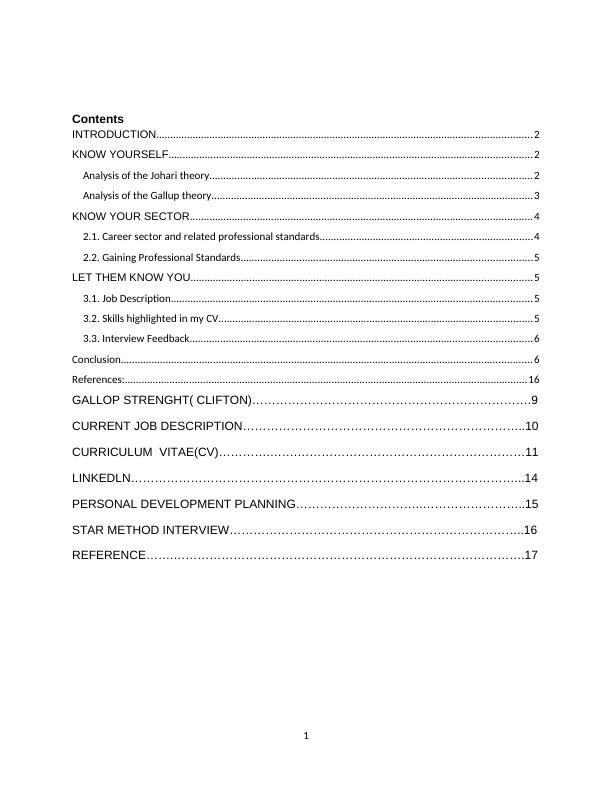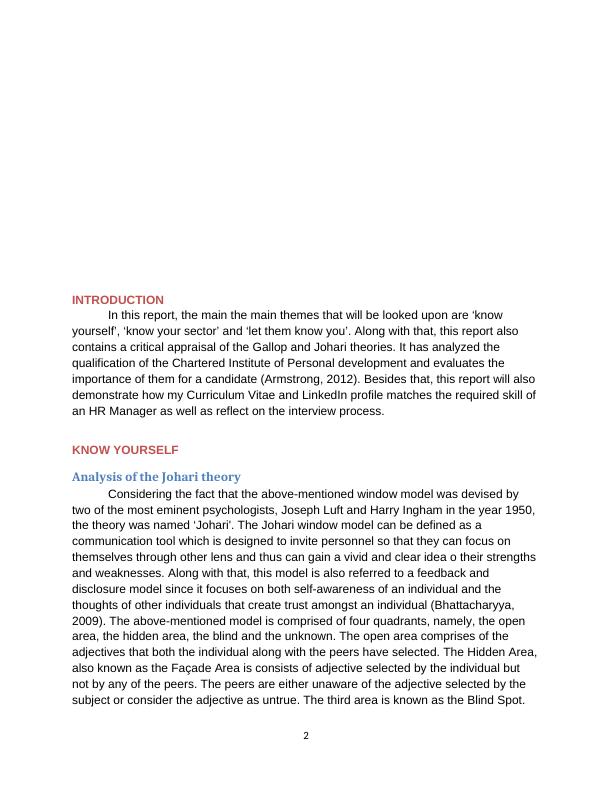Employability Skills and Professional Standards for HR Managers
This report focuses on the main themes of employability skills, including knowing oneself, knowing the sector, and making oneself known. It includes an analysis of the Johari and Gallup theories, an evaluation of professional standards, and a reflection on how the candidate's LinkedIn profile and CV match the required skills and the interview process.
Added on 2023-06-13
About This Document
Employability Skills and Professional Standards for HR Managers
This report focuses on the main themes of employability skills, including knowing oneself, knowing the sector, and making oneself known. It includes an analysis of the Johari and Gallup theories, an evaluation of professional standards, and a reflection on how the candidate's LinkedIn profile and CV match the required skills and the interview process.
Added on 2023-06-13
End of preview
Want to access all the pages? Upload your documents or become a member.




